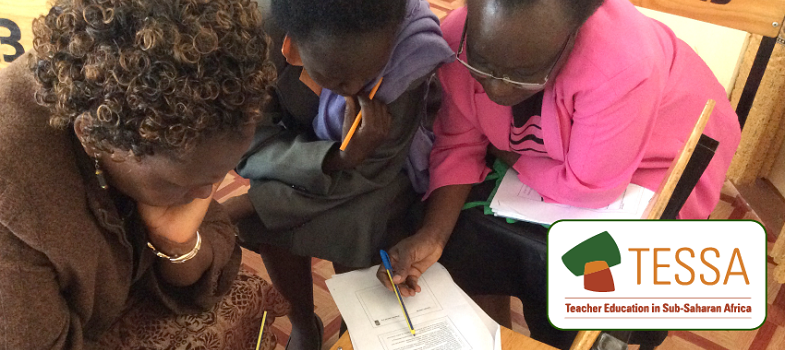3. Focus on the writing process
When we write something, it is important to make it clear what we are trying to say. We need to plan. Next, we start writing and then stop and read what we’ve written. We may decide to change the order of some words, to add or take away some information or change it around. Finally, we check for incorrect spelling, punctuation or grammar. The final piece of writing may look quite different from our first draft. We have ‘crafted’ our writing.
In the classroom, one piece of writing would be completed (i.e. crafted) before another one is begun. Case Study 3 and the Key Activity show you how to prepare for lessons in which pupils are to craft their writing.
Case Study 3: Working with a colleague to help pupils’ writing
Mrs Dorcas Mazibuko and Mrs Beauty Mntambo teach English to Grade 6 classes in Daveyton. They give pupils detailed feedback on their writing, so sometimes stay after school and work together on their marking.
One afternoon, while drinking tea before they began marking, they agreed that they were feeling frustrated. Most pupils seemed to ignore the comments and corrections in their books. The friends thought this was strange, because they found the comments they gave each other on first drafts helped them to improve the final versions of the assignments for their professional development courses. Then Dorcas realised something important! Her pupils didn’t get a chance to do more work on the same piece of writing. Instead, there was a new topic in each writing lesson. When she said this to Beauty, her friend agreed that the same happened in her class. That’s how they’d been taught when they were at school!
They decided to try a new approach. They would use several lessons to work on drafting and crafting the same piece of writing. They would give pupils ideas to guide their writing and rewriting. At first, pupils didn’t like rewriting, but when they saw how their work improved, they started to take much more pride in it.
Key Activity: From first draft writing to crafted poems/stories
- Before the lesson, read pupils’ first drafts and decide on some general questions to ask them all to improve their work (see Resource 5: Questions for pupils). Write these on the chalkboard.
- Return the drafts, with some general comments on what you like about pupils’ writing. Explain that they are now going to craft their writing.
- Ask them to reread their first draft and to use the questions on the board to write an improved second draft.
- Ask them to exchange their second draft with a partner and give each other suggestions for improvements.
- Ask them to use these suggestions to write the final version. Go round the class and help where necessary. Encourage them to include drawings with their writing.
- If there isn’t time to complete this activity within the class period, ask pupils to complete the activity at home and report back the next day.
- Ask them how the process of drafting helped.
Were there any improvements in pupils’ writing as a result of the drafting and crafting process? How can you build on these?
With younger pupils or those less competent in the classroom language, you could work with them to draft and redraft a simple piece over two lessons – giving them space between lessons to think about what they really wanted to say.
2. Working in groups to write life stories



